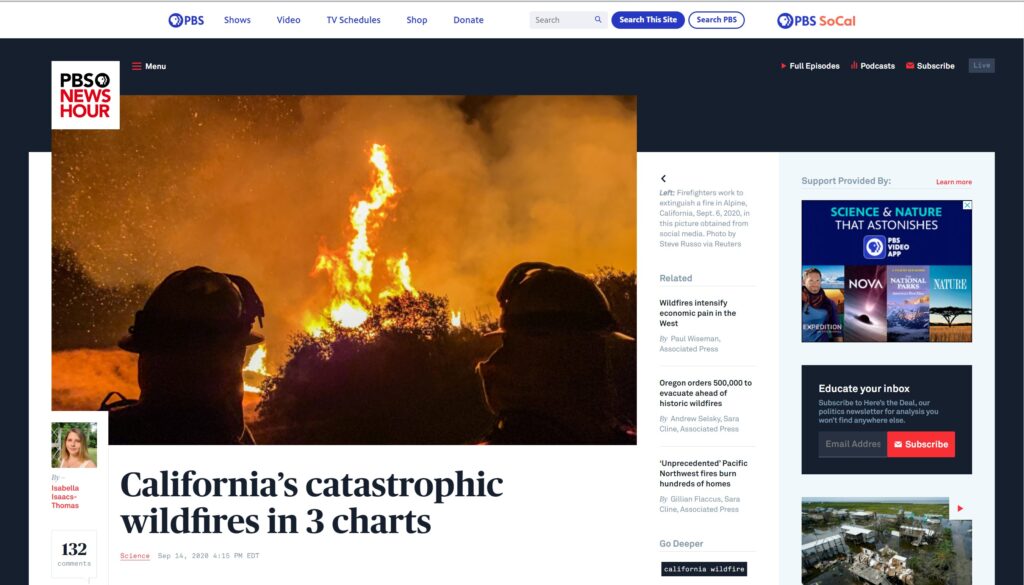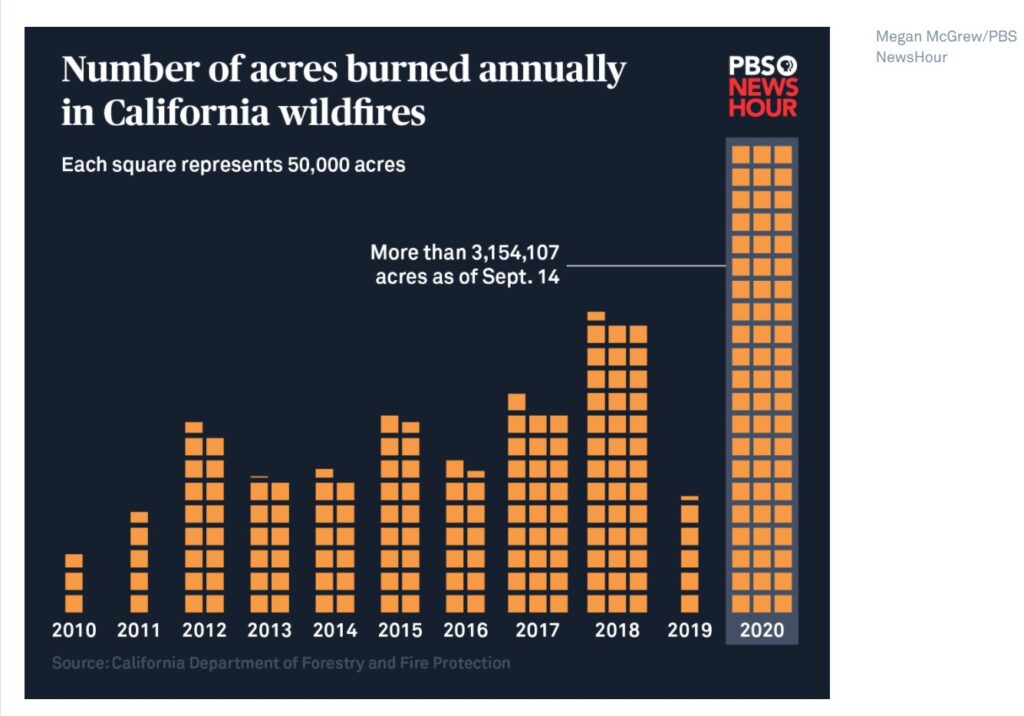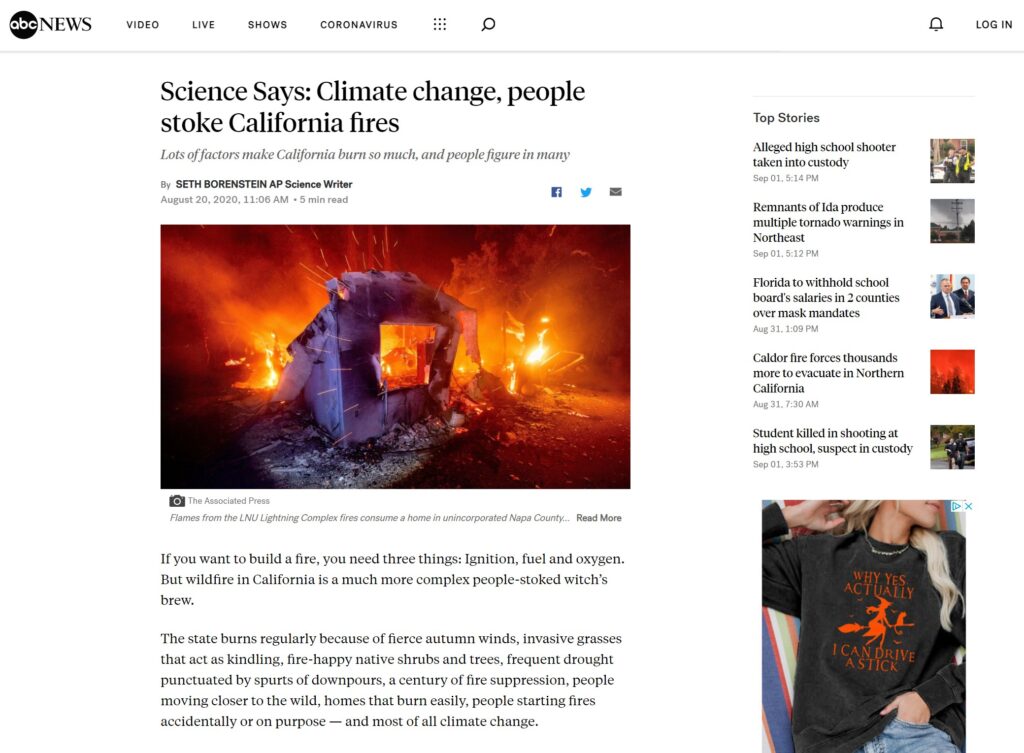Living in California, devastating earthquakes have been the long-time norm. While they have not disappeared, it seems they are not front and center in the media of late. According to the CEA, the last major earthquake above 7.0 was in July 2019 in Ridgecrest, CA, and before that was a 7.2 in April 2010 on the Baja CA/Mexico border. This is fantastic news for California residents, and we would be celebrating if it were not for the tragic wildfires being the major issue the state faces currently. I began paying attention to the wildfire challenge last year during the COVID-19 pandemic. It caught my attention due to the sense of one tragedy on top of another tragedy. I began to ask myself whether the state’s wildfires are getting worse or are just being sensationalized in the media. To get my answer, I evaluated four articles differentiated from news versus opinion.
News:
Isabella Isaacs-Thomas with PBSNewsHour.org offered an informative article filled with graphs and charts outlining the devastation of California wildfires. Within the article, the author provides three graphs. One of which reveals the wildfires are burning a greater number of acres each year in California. The author has cited the source of the graph but unfortunately does not directly embed a link to the California Department of Forestry and Fire Protection statistics. The two additional graphs do not include embedded links either, but all information gathered is attributed to Cal Fire. The author does offer numerous links to additional credible sources that create an overall sense of trustworthy data.
This article is one example of a news piece for many reasons. Notably, the article comes from a news program rated as a “high-credibility” source due to PBS’s record of obtaining in-depth information from quality sources and consistent “fact-check” scorecard. Another reason is Isabella Isaac-Thomas’ numerous writing credits for the PBS News Hour since 2019 on health and science-related topics that span the nation. Lastly, the article itself includes well-sourced and documented information. Unfortunately, the graphs were developed in-house by a PBS staff member based on information gathered from the Cal Fire stats and events webpage. However, with a quick reference search, the information is easily found and verifiable. It is appreciated the author delivers the information in a straightforward approach without any personal perspective.
Even with PBS being known as a credible source, the topic when search online continued to confirm the wildfires in California are increasing.
The article titled “The Worst Fire Season Ever…Again” by the Los Angeles Times reports that California saw its record-breaking wildfire season in 2020, and the severest ones have occurred in the past 10 years. The article shows that the number of acres burned has nearly doubled, and more structures were burned in the 2018 Camp Fire than in the last six fires combined. According to the article’s sources, the wildfire season is getting longer and will worsen without mitigation measures.
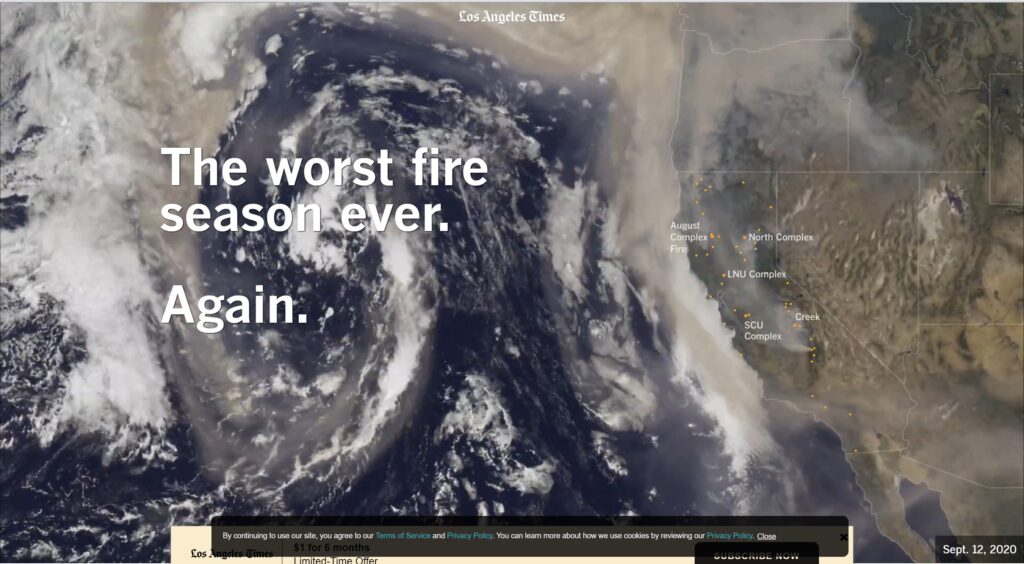
The Los Angeles Times article offers numerous illustrations and charts to back up its claims which makes it considered newsworthy. The entire article is based on facts and does not include opinions or personal commentary. Another form of confirmation lies in the footer of the article outlining the sources used to gather the necessary information within the piece and the graphics. However, links to the source could have been provided next to the graph to make it easier for the reader to verify the information. Additionally, the source links do not directly take the reader to the findings cited, but the source material is discoverable on the websites provided. The last item that verifies the article is a news piece is again within the footer. The author provides transparency in the data collected, not including a specific fire along the Oregon border. Contributor biographies and contact information are also provided in the footer.
Opinion:
While finding credible sources with data-packed articles, many other articles found seemed to come by way of opinion with quoted commentary from outside sources. ABC News highlighted an article confirming California wildfires have seen a five-time increase of acreage burned since 1972. The author notes many statistics and provides quotes from outside sources within his piece.
This article reads more like an opinion piece than news, even if the editor or the writer does not label it. The article begins with statements, and the author uses quotes from scientists from across the country to back his claim. Unfortunately, the challenge with the article is no links are provided to the source of the information or document containing the statements made by the scientists or state officials. This is especially true when quoting the state Governor regarding lightning strikes and their correlation to wildfire origination. For example, with a quick internet search, the Lake Fire’s cause is still unknown even when attributed to lightning by the article’s sources. This article is filled only with statements to confirm the author’s point of view on the matter at hand.
Another opinion piece by the Daily Republic, a local newspaper out of Solano County, reveals a frontline firefighter’s opinion on California wildfires getting worse every year. Dan Turner, the author of this piece, explains in his 37 years as a firefighter that he has seen the fires far worse now than ever before. He urges lawmakers, insurance companies, scientists, and land developers to come together to tackle the issue that is causing financial ruin for so many communities.
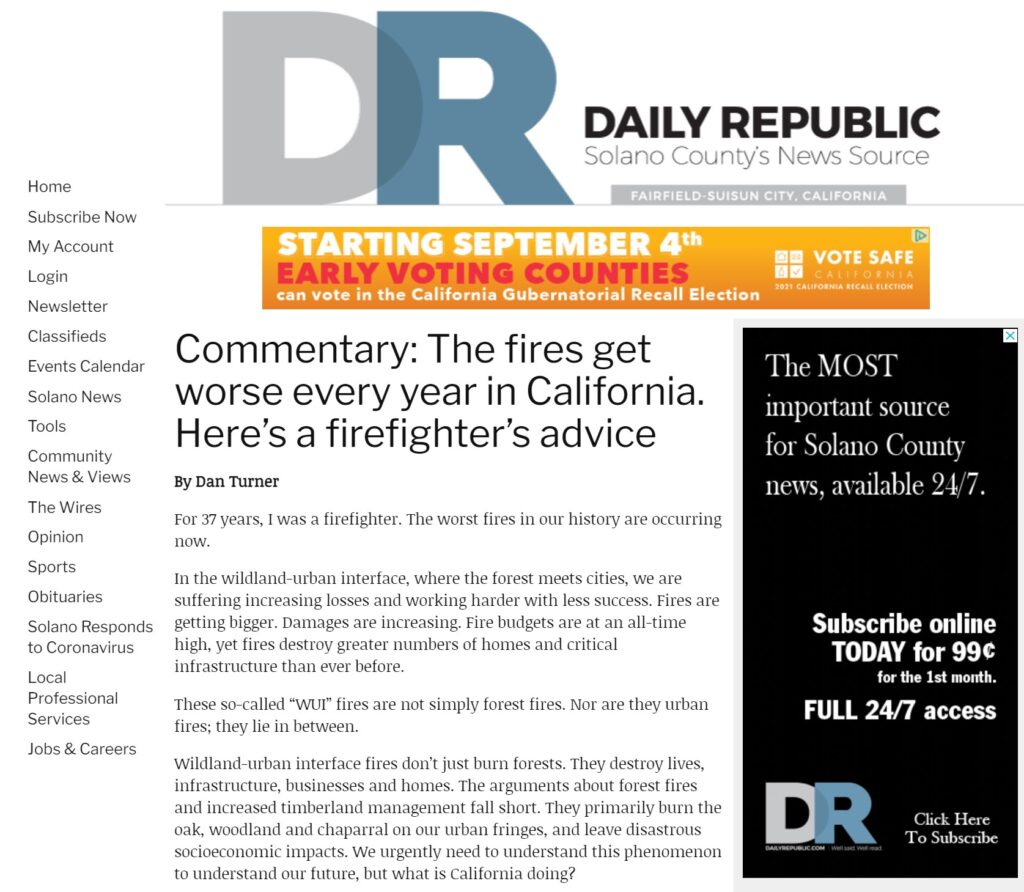
The tell-tell sign this is an opinion piece is from the title beginning with the word “commentary.” Other indicators include the personal perspective the article is written from. In the opening line, the article starts with the “I” point of view, indicating it is from the author advising of his experience as a firefighter. The article goes on with the author’s plea to California leadership to work together to solve the wildfire problem. Lastly, the article does not provide any credit to any outside sources, which is another sign this article is one of opinion.
As stated by ASU Professor Dan Gillmor “be skeptical of absolutely everything”, which means to me to question article contents and verify source accuracy to enable me to be fully informed before finalizing judgment.

